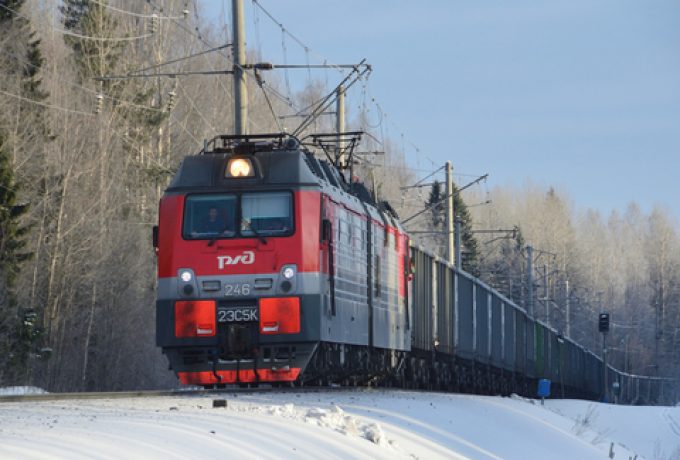RTR: Germany arrests three people suspected of giving technology to China
REUTERS reports: Three Germans have been arrested on suspicion of working with the Chinese secret service ...

Russia is continuing to develop its rail freight capacity, part of its eastern pivot after two years of war on Ukraine having left it shut out from most of the major markets.
The shift to the tracks is evidenced by the growth of its national rail carrier, Russian Railways (RZD), which saw freight revenue climb year on year in 2023, coinciding with the opening of a new link between Moscow and Taiyuan, in China.
A spokesperson for China’s State Council said: “The train is scheduled to travel nearly 5,000km to Moscow via the border port of Erenhot.
“A train loaded with all sorts of cargo, including auto parts, appliances, cast iron fittings and kaolin, in 55 containers, departed from Taiyuan on Thursday morning, marking the inauguration of the service.”
Deputy manager of Huayuan International Land Port Wang Xingdong said the new link was one of 15 recently opened from Shanxi Province.
The new connections form part of the country’s decades-long Belt and Road Initiative, the 15 intermodal routes linking it up with 40 major cities across 16 countries.
Since Moscow’s “special military exercise”, now acknowledged to be a war, began in 2022, many of these links have been to Russia and, unsurprisingly, RZD has been a key beneficiary of the spike in demand for railfreight capacity. With full-year revenues of 3trn roubles ($32.3bn), the operator has put the surge in income down to both rising demand and increased track access charges.
A spokesperson for the carrier told reporters that freight and track access generated some 2.2trn roubles and said the results were “historic”.
On the back of the strong revenue, RZD’s 12-month profits climbed 51% against 2022, to 170bn roubles, although the figure was for the group as a whole and it did not declare how profitable the rail freight division had been.
Reports have claimed that while more freight has been moving to rail, operators have faced increasing expenses. Most recently, The Loadstar reported carriers having to suspend a sizeable number of services as they struggled to source lubricants and other essentials for maintenance to keep trains running.
Even so, the pivot to rail appears to be for the long-term, the country having announced in early March it was to pump 366bn roubles into improving rail links with China. Railfreight today said Russia would spend 1trn roubles upgrading its trans-Siberian network.
Comment on this article